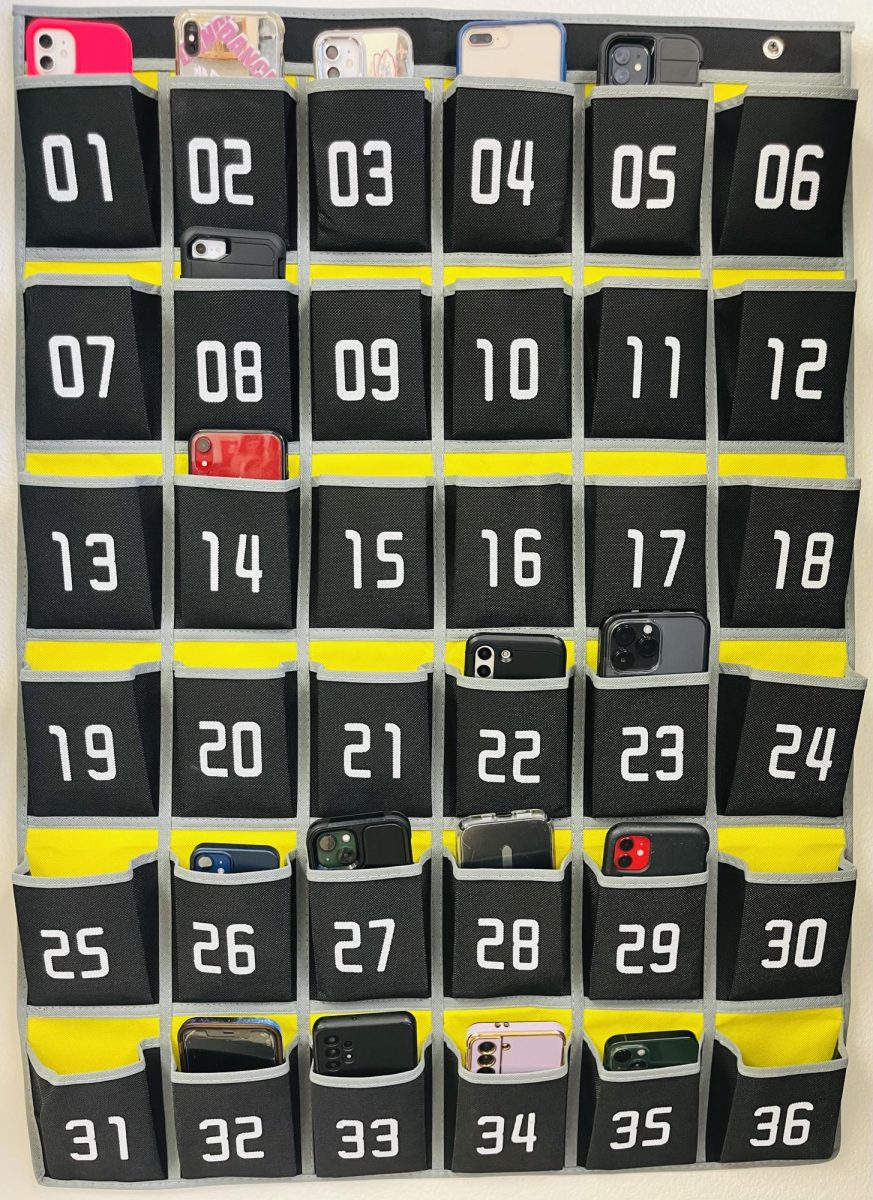This year at OHS, new and differentiating cell phone policies are being established. Many teachers and students have contrasting views concerning the topic of phones in the classroom.
Certain teachers are choosing to hold a strict policy, requiring students to put their phones up for the entirety of class, while others are more lenient and provide students with a sense of freedom.
“My rules are that the kids can have [phones] on their persons during class time,” said Jim Burton, chemistry teacher.
Along with this freedom comes the practice of self control and taking responsibility over individual learning. It’s up to the students to form good habits of discipline now because in the future, they won’t have someone monitoring their cell phone use.
“The expectation is that when we’re doing a lecture, [students] are not paying attention to their phones, but I’m not going to sit there and be over their shoulder and monitor that; that’s up to them,” Burton said.
In the past, this responsibility has been pushed to the limits, prompting certain changes to classroom rules. Teachers work to find a balance between allowing phones during certain times, but firmly restricting them during others.
“During tests and quizzes, based on previous years when kids try to use their phone when they shouldn’t be, we have gone to phones going in the shoe holder on the wall,” Burton said.
With the opportunity to have their phones out during class, many students take advantage of the endless information available, ultimately creating a disadvantage.
“I think it distracts them, and instead of kids trying to figure out the correct answer for themselves, they spend more time using their phones to try to find the correct answer that someone else has already done for them,” Burton said.
Despite the distractions, phones can be a vital resource in times of need. Students have an endless amount of information available to them in which they can learn and explore.
“One advantage that I notice is that when [students] are asking questions or doing a lecture and they ask me something about chemistry that I’m not quite sure of… I tell them to look it up and share what they find out,” Burton said.
Ultimately, teachers who are less strict with cell phone rules leave the choice up to the students, and hope that they can be respectful when needed.
“So I think there is a time and place for [phones], but a lot of kids don’t know, understand, or maybe just don’t care that class time is not that time,” Burton said.
Other teachers opt for a more firm approach when it comes to the idea of phones in the classroom.
“When students arrive, they are required to put their phone in the cell phone holder, and it stays there until the last few minutes of class,” said Andrea Wallach, English teacher.
There are many advantages to eliminating the factor of phones and the distractions that they bring. Enforcing these rules may naturally build the skills and habits needed later in life to know the appropriate times for phones.
“This has been great for my classroom because students are able to focus on instruction and getting their work done rather than trying to take out their phones without getting caught,” Wallach said.
Phones can deprive students of the importance of face to face communication and comprehension. Working with groups and participating in class discussion is a vital experience that students need in order to succeed.
“Based on my observations, students do not engage with their peers when allowed to have their phones out,” Wallach said. “This is self-limiting because you can’t possibly expand your beliefs or understanding of the world without taking the opportunity to engage with people outside of your circle.”
Students who rely on their phone too heavily can feel unprepared and less positive when certain situations arise. When it’s time to take a test, students are no longer being assessed on what they can do or find; instead it’s how present they’ve been in class.
“It seems to create a lack of confidence in independent thought,” Wallach said. “ It removes opportunity for increasing feelings of self-efficacy.”
Along with teachers, students have their own unique opinions about cell phone policies, widely differing and depending on the person.
“I think that [phones] can be both a benefit and a con because it depends on how people use them,” said Maya Bustos, junior.
Some students are successfully able to decipher the right and wrong times to be on their phone, and enjoy the benefits in both situations.
“Personally, I like the freedom of being able to keep [phones] out because I know that I’m in AP classes, and with my self control I’ll be able to leave my phone on the side of my desk without reaching for it all the time,” Bustos said.
Advantages and disadvantages of cell phones alike circle back to the person who is utilizing the device. When the time is appropriate, a number of students use their phones to complete their work more effectively.
“I like to use my phone to listen to music, and then also sometimes if I’m trying to do two worksheets at once, I’ll have docs pulled up on my phone… because sometimes it’s hard to split screen three times on your chromebook,” Bustos said.
With the extensive amount of information that people can obtain through their phones, teachers and students must try to find a healthy balance and understand when it becomes too much.
“In order to increase self-efficacy, the opportunity to fall short of a goal needs to exist. With the world at the [student’s] fingertips, this opportunity is removed from their academic lives,” Wallach said.



